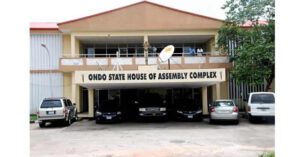
Nigeria ripe for blue economy – Jamoh
The Director General, Nigerian Maritime Administration and Safety Agency (NIMASA), Dr Bashir Jamoh, on Tuesday said that the country was ripe for blue economy.
Jamoh said this at the University of Lagos Institute of Maritime Studies maiden Annual Lecture held in Lagos.
The lecture has the theme: ”From Crude to Blue – Nigeria’s Blue Economy: The Imperative of Maritime Domain Awareness and Good Governance”.
According to Jamoh, Nigeria is already into blue economy and what needed to be done is to see to its sustainability.
“The Cabotage Vessel Financing Fund (CVFF), using ferries, ship repairs and building are all blue economy, and there are many others. We are into it but what is left now, is how to structure it.
“The amount of value that the blue economy provide is over 2.5 trillion dollars. So what portion, how much does Nigeria intend to strike from this amount? This depends on our own seriousness,” he said.
Jamoh pointed out that Nigeria needed to tap into the 350 million jobs that abound in the blue economy.
“On the issue of increasing jobs, we are about to commence the disbursement of the Cabotage Vessel Financing Fund. The total exposure of the CVFF is within the region of 350 million dollars and this amount is 50 per cent of NIMASA control.
“By the guidelines, the primary lending institutions will provide 35 per cent and shipowners will have to provide 15 per cent, making 50 per cent in total.
“If we have 350 million as 50 per cent contribution to NIMASA, then we are accepting another 350 million from the primary lending institutions and that means 700 million dollars.
“With 750 million dollars, we are set to give maximum of 25 million dollars each to shipowners to purchase ship which will directly or indirectly provide jobs,” he said.
Jamoh added that presently, the Nigerian National Petroleum Corporation (NNPC) had expressed interest in taking part in the funding of ships that would be acquired by Nigerian shipowners using the soon-to-be disbursed CVFF.
He said that to achieve this, the NNPC offered to provide nine per cent funding that would enable shipowners to access the CVFF and buy new ships.
“The NNPC agreed to offer them nine per cent, so that the shipowners will only have to source for only six per cent.
“NNPC said it needs ships to lift Nigerian crude and that it will give Nigerian shipowners the specifications of ships to buy. It will also give them nine per cent out of the 15 per cent of the funding that was supposed to be provided by the shipowner.
“They said they will take over the ship and provide the cargo until it recovers the amount invested in the acquisition of the ships,” Jamoh said.
He listed some of the assets the country had that would ensure the utilisation of the blue economy to include 853 km coastal line, 8573 kn inland waterways, six port complexes and 21 oil terminals.
It also include more than 10 jetties, 200 nautical miles of exclusive zones, 200 million population; all consumers, and others.
He noted that the greatest threat to Nigeria blue economy was sea blindness, adding that there was need for more engagements and education on what the blue economy was all about.
“So, many people do not know what constitute the blue economy and ways to harness it, but that can only be done through this kind of forum.
“Areas that should be invested in and that will help the economy are: marine transportation, fisheries, aquaculture, renewal energy, tourism, climate change, waste management, port development and logistics, shipping and others,” he said.
Mrs Dere Awosika, the chairman of the occasion, noted that the blue economy hold many lucrative opportunities for Nigerian, adding that the financial institutions had to do a lot of work to ensure that the right finance was made available to develop the industry.
Represented by Ms Iyabode Soji-Okusany, Head Of Corporate Banking, Access Bank, said that Nigeria could not continue to depend on crude as it truly needed to turn blue, while everyone should work collectively to do the right thing.
Prof. Folasade Ogunsola, Vice Chancellor, University of Lagos, noted that the idea of having an annual lecture at the Institute of Maritime Studies was in accordance with the tradition and customs of knowledge-based institutions was muted in 2021.
“It was thought that such an occasion should be one that will bring all the captains of the Maritime industry together under one roof on a topic of major national interest.
“The institute was established in 2013 by the University of Lagos in conjunction with NIMASA to address the chronic shortage of personnel in the Nigerian maritime space,” she said.



